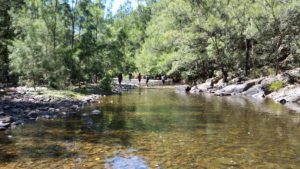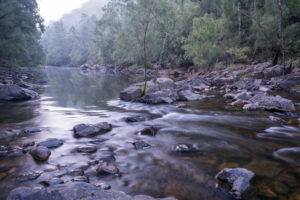In late March 2021 an extreme rain event on the Australian East Coast caused serious flooding which endangered people and property in many areas including the Hawkesbury-Nepean Valley on Sydney’s outskirts. The Hawkesbury-Nepean Valley flood highlighted the dangers of urban development in flood-prone areas given the high likelihood of more climate change-induced flood events in future.
The rain event and resulting floods have intensified debate on the controversial proposed 14 metre raising of Warragamba Dam Wall. Many experts and conservationists contend that the most extreme floods are unlikely to be stopped by raising Warragamba Dam wall. Flooding in the Hawkesbury-Nepean Valley comes from other river/creek sources in addition to water flowing over Warragamba Dam wall. In addition the geography of the Hawkesbury-Nepean area restricts the amount of water that can flow out of the Valley.
The Colong Foundation for Wilderness states that the raised dam wall proposal is being driven by pressure from developers. As part of the Warragamba Dam wall raising proposal, Infrastructure NSW plans to house an additional 134,000 people on the Hawkesbury-Nepean floodplain in coming decades. The Foundation states that people in new and existing residential developments in the Valley will not be safe from future extreme floods even if the Warragamba Dam wall were to be raised.
The Foundation states that the proposed dam wall raising will lead to flood water inundation of World Heritage listed Blue Mountains National Parks and wilderness streams and desecration of rare and ancient natural heritage and Indigenous cultural sites.
Adding weight to arguments against the raised dam wall proposal, the Australian Insurance Industry recently withdrew their support for the Proposal due to concerns over the probable loss of important cultural sites and natural habitat. The Industry suggested that the State Government should investigate alternative measures to mitigate flood risk in the Hawkesbury-Nepean Valley.
Alternative flood mitigation actions available to the State Government include improving floodplain evacuation routes such as the Castlereagh Connection, pre-emptive dam-water release water and relocating people in the most flood-prone areas. NSW Deputy Premier John Barilaro recently stated that alternatives to the dam wall raising need to be considered including lower water levels and building desalination plants for water supply.


